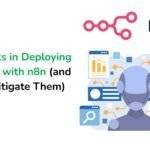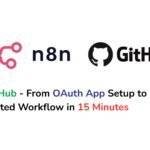Natural Language Processing (NLP) is one of the most powerful areas of artificial intelligence today.
Thank you for reading this post, don't forget to subscribe!As someone working with AI tools, I’ve tested and analyzed natural language processing software across different industries—ranging from healthcare and finance to digital marketing and research.
This guide gives you a complete breakdown of the top NLP tools in 2025, along with their pros, cons, and the ideal fit for businesses and developers.
If you’re searching for the best natural language processing tools, this blog will save you hours of research.
We’ll explore NLP software, APIs, and techniques, list use cases and real-world examples, and answer FAQs to help you pick the right tool.
What is Natural Language Processing?
Natural Language Processing (NLP) is a branch of AI that helps machines understand, interpret, and respond to human language. From Google Natural Language API to advanced LLM-powered chatbots, NLP is the backbone of voice assistants, machine translation, text analytics, and more.

Simple Explanation
- What is natural language? It’s the way humans communicate (English, Hindi, Spanish, etc.).
- What is natural language processing in AI? It’s how machines are trained to understand natural language, extract meaning, and produce smart responses.
Popular Natural Language Processing Examples in Daily Life
- Voice assistants like Siri, Alexa, Google Assistant
- Spam detection in Gmail
- Auto-translation in Google Translate
- Chatbots in banking and e-commerce
- Sentiment analysis in customer reviews
Why Use Natural Language Processing Software in 2025?
Businesses and developers use NLP software to:
- Automate communication (chatbots, customer support)
- Extract insights from text (reviews, surveys, reports)
- Enhance productivity (summarization, grammar correction, auto-completion)
- Support decision-making through text classification and trend analysis
- Enable multilingual applications with real-time translation
With the rise of LLMs like GPT, Claude, and Gemini, NLP tools have become smarter, faster, and easier to integrate.
Top 15 Natural Language Processing Software Tools in 2025

Here is the curated list of the best Natural Language Processing software, including major APIs, enterprise platforms, and open-source tools.
1. Google Cloud Natural Language API
Best for: Businesses needing scalable text analysis
- Pros: Easy integration, entity recognition, sentiment analysis, multilingual support
- Cons: Pricing may get high for large-scale usage
- Ideal Fit: Startups, enterprises, and developers needing quick NLP solutions
2. OpenAI GPT API
Best for: Advanced text generation and summarization
- Pros: State-of-the-art generative NLP, widely supported
- Cons: Expensive at scale, data privacy concerns
- Ideal Fit: Developers building AI assistants, content apps, and bots
3. IBM Watson Natural Language Understanding
- Pros: Strong enterprise features, robust sentiment analysis, data privacy focus
- Cons: Complex setup, higher pricing
- Ideal Fit: Large companies in healthcare, finance, and customer support
4. Microsoft Azure Cognitive Services – Text Analytics
- Pros: Real-time language detection, summarization, and classification
- Cons: Works best within Azure ecosystem
- Ideal Fit: Businesses already using Microsoft tools
5. Amazon Comprehend
- Pros: Scalable NLP for classification, entity extraction, key phrases
- Cons: Learning curve for non-AWS developers
- Ideal Fit: E-commerce, call centers, market research
6. Hugging Face Transformers
- Pros: Open-source, huge model library, active community
- Cons: Requires technical expertise
- Ideal Fit: AI researchers, startups, developers who want flexibility
7. SpaCy
- Pros: Lightweight, fast, offline processing, production-ready
- Cons: Needs coding knowledge
- Ideal Fit: Developers building custom NLP pipelines
8. NLTK (Natural Language Toolkit)
- Pros: Great for beginners, huge library, educational resource
- Cons: Slower, less production-focused
- Ideal Fit: Students, researchers, NLP learners
9. BERT and Google AI Models
- Pros: Pretrained, state-of-the-art performance on text tasks
- Cons: Requires fine-tuning for best results
- Ideal Fit: Data scientists, AI researchers
10. Rasa
- Pros: Open-source chatbot and assistant framework
- Cons: Requires technical expertise to set up
- Ideal Fit: Businesses building conversational AI
11. MonkeyLearn
- Pros: No-code NLP platform, easy drag-and-drop workflows
- Cons: Limited compared to enterprise APIs
- Ideal Fit: Small businesses, marketers, analysts
12. Polyglot
- Pros: Multilingual NLP support, free to use
- Cons: Less active development compared to spaCy
- Ideal Fit: Language researchers, translation projects
13. DeepAI NLP API
- Pros: Simple API, easy for developers
- Cons: Limited advanced features
- Ideal Fit: Small projects looking for affordable NLP
14. Cohere NLP API
- Pros: Strong embeddings, fine-tuned NLP for semantic search
- Cons: Newer player, smaller ecosystem than OpenAI
- Ideal Fit: Search, recommendation engines, enterprise AI projects
15. Stanford CoreNLP
- Pros: Academic-grade, powerful for linguistic tasks
- Cons: Heavy, requires installation and setup
- Ideal Fit: Researchers, academia, AI labs
Comparison Table: Top NLP Software in 2025
| Tool | Best For | Pros | Cons | Ideal Fit |
|---|---|---|---|---|
| Google Natural Language | Sentiment & text analysis | Easy integration | Expensive | Startups & enterprises |
| OpenAI GPT API | Generative text | Advanced NLP | High cost | Developers & AI apps |
| IBM Watson NLU | Enterprise-grade analytics | Secure, robust | Complex setup | Healthcare, finance |
| Azure NLP | Real-time AI text services | Scalable, multilingual | Best in Azure | Microsoft ecosystem |
| AWS Comprehend | Text classification | Scalable | Learning curve | E-commerce, call centers |
| Hugging Face | Custom AI | Open-source | Requires coding | AI researchers |
| SpaCy | Fast NLP pipelines | Lightweight | Needs coding | Developers |
| NLTK | Learning NLP | Beginner-friendly | Slow | Students |
| BERT/Google AI | State-of-the-art | Pretrained models | Fine-tuning needed | Data scientists |
| Rasa | Conversational AI | Great for bots | Technical setup | Businesses building chatbots |
| MonkeyLearn | No-code NLP | Simple UX | Limited scale | Small businesses |
| Polyglot | Multilingual | Free | Low updates | Language researchers |
| DeepAI | Affordable NLP API | Easy integration | Limited | Small projects |
| Cohere | Semantic search | Embeddings power | Smaller ecosystem | Search & rec engines |
| Stanford CoreNLP | Academic NLP | Strong linguistic tasks | Heavy & manual setup | Academia |
NLP Tools and Techniques in Practice
NLP software typically relies on a mix of techniques like:
- Tokenization (breaking sentences into words)
- Part-of-speech tagging
- Named Entity Recognition (NER)
- Topic modeling
- Sentiment analysis
- Embeddings and transformers
These are the building blocks behind advanced NLP APIs and platforms.
Best Natural Language Processing PDF Resources
If you want to dive deeper, here are reliable resources:
- Google Natural Language documentation (PDF guides available)
- IBM Watson NLP papers
- Stanford CoreNLP academic papers
- Hugging Face model cards

FAQs on Natural Language Processing Software
1. What is natural language processing software?
It’s software that allows machines to process, analyze, and generate human language.
2. What are the best natural language processing tools in 2025?
Google NLP API, OpenAI GPT, IBM Watson, Hugging Face, and SpaCy are top choices.
3. What is an example of natural language processing?
Spam detection in Gmail or translation in Google Translate.
4. What is Google Natural Language?
It’s a cloud API from Google that provides sentiment, entity, and syntax analysis.
5. What is the best NLP tool for beginners?
NLTK and MonkeyLearn are ideal for beginners.
6. What’s the difference between NLP APIs and software libraries?
APIs offer ready-to-use services via cloud, while libraries like spaCy need coding for custom solutions.
7. What is natural language processing in AI?
It is an AI field that helps computers understand and work with human language.
8. Is there a natural language processing PDF I can study?
Yes, many NLP research papers and toolkits provide free PDF guides online.
9. Which NLP tools are used in chatbots?
Rasa, OpenAI GPT API, and Dialogflow are commonly used.
10. What are NLP tools and techniques in 2025?
They include deep learning transformers, embeddings, entity recognition, and sentiment analysis.
11. Is natural language processing software free?
Some tools like spaCy, Hugging Face, and Stanford CoreNLP are free. Cloud APIs usually charge based on usage.
12. Can I use NLP tools without coding?
Yes, no-code platforms like MonkeyLearn allow NLP tasks without programming.








